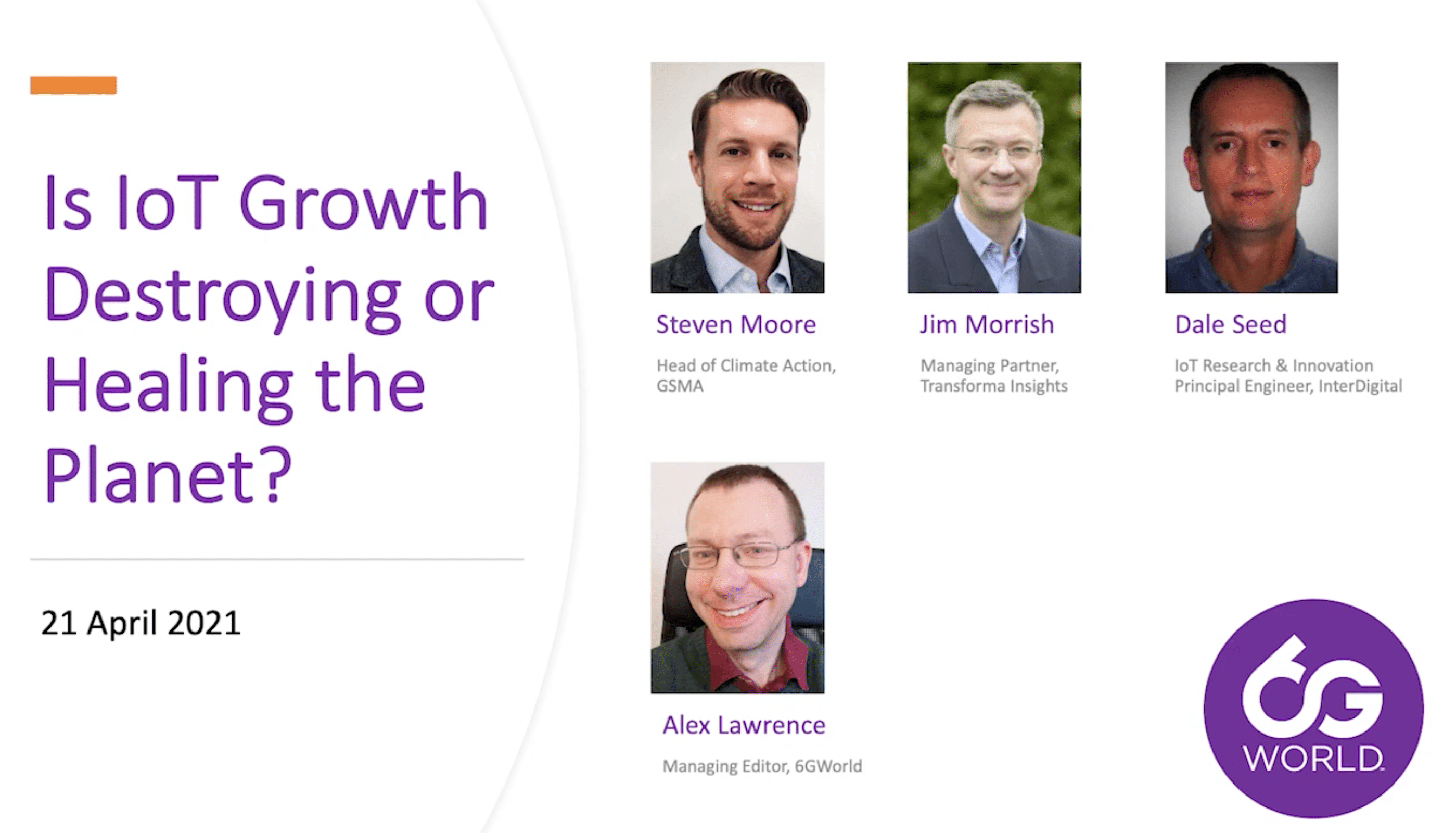D4P team has a strong interest in emerging technologies and follows relevant events to stay up to date. One of the events that caught our attention last week was the 6GWorld webinar: Is IoT Growth Destroying or Healing the Planet?
There are now roughly three times more connected devices than people in the world, and it will not be long before IoT devices outnumber people several times over. The question that everyone is asking is: can the efficiency savings from IoT balance the costs stemming from the increasing need for electricity and raw materials and the ever-growing e-waste?
Drawing on research conducted by Transforma Insights’ IoT specialists, the 6GWorld organized a webinar aimed at answering this question. During the event, the panelists explored the environmental and financial impacts different categories of IoT devices have on industries and consumers.
Alex Lawrence, 6GWorld Managing Editor opened the webinar with a brief introduction to 6GWorld and the recently published White Paper, entitled “Sustainability in New and Emerging Technologies.” He then opened the floor to one of its authors, Transforma Insights’ Founding Partner, Jim Morrish.
Jim started by introducing the scope of his research that is mainly focused on IoT and other emerging technologies, (e.g., BlockChain, Data Sharing, Edge, AI, etc.). He stressed that this range of new technologies, which are now coming over the horizon, are going to increasingly impact our lives in the coming decade. The purpose of his work has therefore been to measure the impact of these novel solutions. The idea was to compare the world with these technologies with the world without them. The overall conclusion that Jim and his team came to is that the new technologies save more electricity, fuel, and water than they use. Jim also outlined the four main phases for technology-based solutions, namely manufacturing, distribution, operation, and end of life, comparing different consumer and enterprise applications. His research clearly showed that in the case of enterprise applications, the overall savings from the operation phase are greater than the costs stemming from the other three phases. He gave examples of technological solutions, such as fleet management and stock monitoring. The White Paper containing more insights is available for download here. Jim terminated his presentation by drawing attention to the scale of CO2 saving from IoT solutions that are projected to be 26 times greater than the costs by 2030. He then gave the floor to the Head of Climate Action at GSMA, Steven Moore.
Steven spoke about the program he has been involved in since early 2019. The initiative began when the global mobile industry committed to achieving net-zero carbon dioxide emissions by 2050 (at the latest). GSMA had just performed an analysis to verify the progress against the set targets, which showed very promising results: around 1/3 of the industry by revenue has set net-zero target by 2050 while 2/3 have more immediate carbon reduction targets. It is important to note that the mobile industry was the first sector to break through the 20% tipping point necessary to accelerate the transformation needed to achieve a carbon-neutral world. More findings are available on the GSMA website.
The presentation round continued and gave Dale Seed, an IoT Research and Innovation Principal Engineer at InterDigital a chance to introduce a technologist’s perspective on the subject. Dale has been working on IoT for about ten years now. In his current role, he is looking at how to ‘remarry’ IoT and sustainability so they can complement each other. Dale and his team are working on IoT platforms, standards, and pushing out the ideas into standards enabling them to become reality. They recently formed a sustainability committee with like-minded individuals and companies to have a closer look at sustainability as a topic. Examples of their activity include developing services enabling devices to sleep more intelligently or longer, which can help maximize their battery life or a functionality to manage how message communication flows to a network to and from devices and applications and users. They are also looking at digital twins, which are virtual replicas of physical devices. Introducing this functionality would allow devices to sleep and turn off while allowing users to interact with the virtual representation of their device. According to Dale, this technical aspect would greatly help with the overall system’s efficiency.
After the introductions, Alex moderated the discussion and asked insightful questions on topics like greenwashing, sustainability as a competitive advantage, and moving towards electricity from renewable sources and replacing hydrocarbon fuel. The panel ended with a discussion on the most important next steps that need to be taken and the ways the general public can get involved. The panelist shared their perspectives on the topic. Jim emphasized the importance of transparency, mentioning adding statistics to companies and goods as a solution (e.g., adding labels that specify that a product has been produced in XYZ way and had XYZ impact), empowering consumers to make informed choices. Dale stressed the importance of having candid conversations about sustainability and mentioned that taking an honest look at such topics is not always easy due to competing circumstances. He sees coming together and being careful and responsible as a solution. Steven, on the other hand, thinks that it is essential that governments take more initiative and involve scientists and technologists in the conversation.
The full recording of the webinar is available on the 6GWorld website.

Digital for Planet - D4P © 2025 | All rights reserved